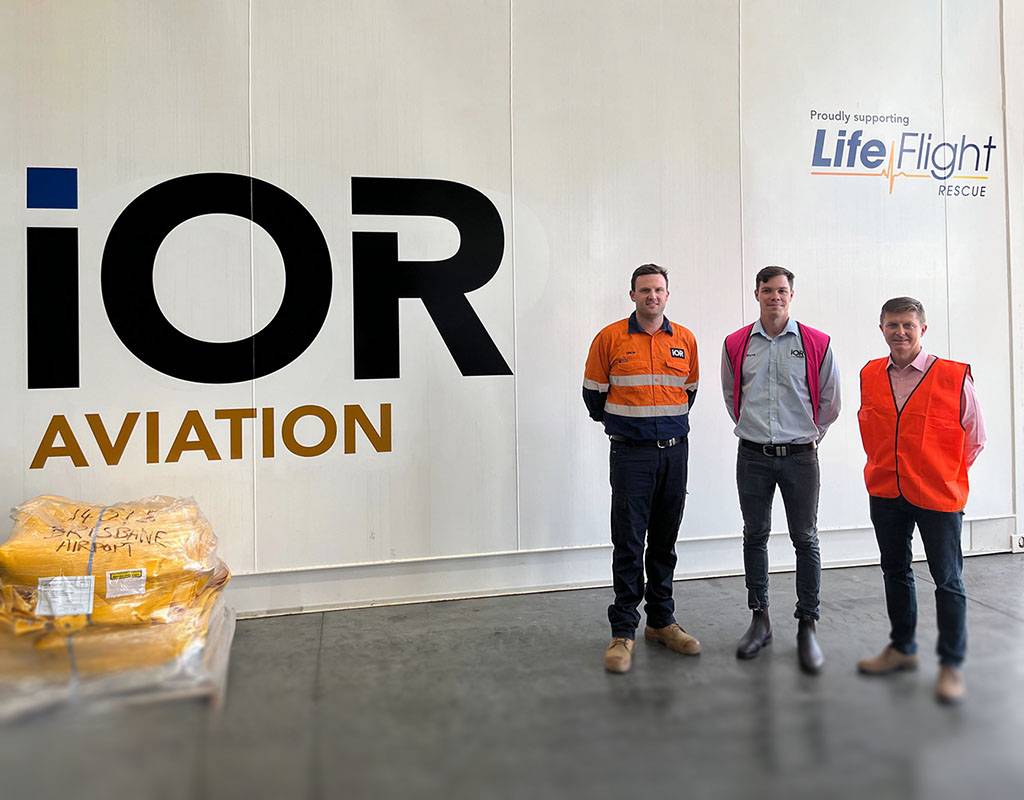
RACQ LifeFlight Rescue crews in Brisbane have opened the pumps on a new fuel storage and management facility, custom built by fuel supplier IOR.
“This fuel tank will enable our flight crews to refuel their aircraft and be ready to respond to a critical mission, more efficiently,” RACQ LifeFlight Rescue General Manager of Operations, Brian Guthrie, said.
Until now, both rotary and fixed wing aircraft have been refueled by outside contractors.
RACQ LifeFlight Rescue’s choppers and jets are refueled after each mission, so crews are ready to take flight, at a moment’s notice.
“Understandably, there are a lot of aircraft in line for fuel at Brisbane Airport and our crews have, at times, been left waiting for their turn to fill up,” RACQ LifeFlight Rescue General Manager of Fixed Wing and LifeFlight Retrieval Medicine, Timothy McGuire, said.
The IOR tank, which was installed at the Brisbane Airport base in December 2021 has a 55,000 liter capacity. That’s four times bigger than a fueling truck.

IOR Head of Aviation, Bryce Morland, said there are several new features to the facility, which improve on the previous fuel supply arrangements at the Brisbane base.
“Crews can refuel the aircraft themselves, as opposed to waiting for someone else,” he said.
“Helicopters can be refueled at 120 liters per minute, the fixed wing aircraft refueling speed is 340 liters a minute.”
The volume of fuel in the tank and ongoing fuel usage is able to be electronically monitored over the internet by LifeFlight and IOR, 24 hours a day.
“Once the fuel volume in the tank reaches a certain low level, the IOR logistics team is notified to schedule a truck to come and fill it up again.”
“LifeFlight can also log-in to IOR’s online portal and see all fuel usage at the Brisbane base in real time, creating significant efficiencies in reconciling fuel costs, administration, and reporting,” Mr Morland said.
In 2021, the Brisbane-based RACQ LifeFlight Rescue helicopter crews clocked up the highest number of flying hours of the LifeFlight rotary wing fleet, spending 1,112 hours in the air, responding to 470 missions.
RACQ LifeFlight Rescue’s Air Ambulance jets, based in Brisbane, took flight on 185 rescue missions.
LifeFlight’s helicopter and jet crews are on call 24 hours a day, 365 days a year. The fuel cell will be operational at all times.
In what is believed to be a world first, IOR has also attached an electronic Quality Control Sampling (QCS) cabinet.
“Each day, flight crews are required to test the quality of the fuel, before proceeding to refuel aircraft,” LifeFlight Engineering Operations Manager, Michael Dopking, said.
“IOR is at the forefront of aviation fuel safety innovation in this space and we’re really proud to partner with them in using this equipment.”
“The QCS cabinet will save a significant amount of time and ensure our helicopters and jets are in the best condition and prepared for flight,” he said.
IOR has provided the aviation refueling facility to LifeFlight as part of their ongoing fuel supply arrangements. The infrastructure’s estimated value is $500,000.
It was built by IOR’s infrastructure team in Eagle Farm, Brisbane, before being transported to the LifeFlight base and installed by IOR’s specialist team.
The RACQ LifeFlight Rescue crews were then provided extensive safety training, in preparation for the tank becoming operational.
“A benefit to LifeFlight is that overhead costs are much more manageable,” Bryce Morland said.
“Our aim is to help organizations, like RACQ LifeFlight Rescue, to continue to save lives, by taking off as quickly and safely as possible.”
The installation marks the end of a two-year campaign by LifeFlight to make refuelling as safe and efficient, as possible.
“It has taken the support of the Brisbane Airport Corporation, our landlords at Xflight Aviation and a considerable upfront financial investment from IOR,” RACQ LifeFlight Rescue General Manager of Operations, Brian Guthrie, said.
“The upfront financial investment from IOR to build and commission the facility was so significant that without its collective, committed, and ongoing support, LifeFlight would not have been able to purchase a fuel tank of this caliber.”
“Thank you to everyone who worked so hard to make this project a reality, we are extremely grateful.”
This press release was prepared and distributed by RACQ LifeFlight Rescue.

